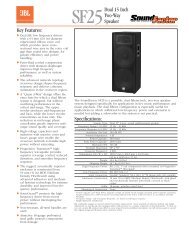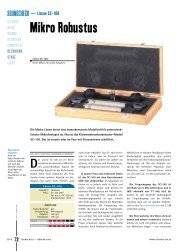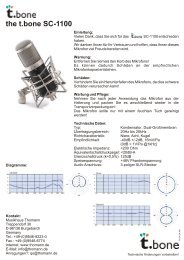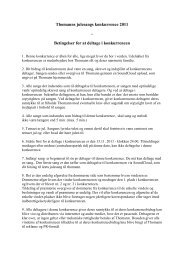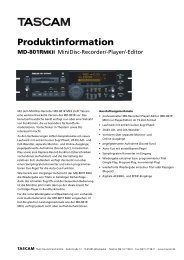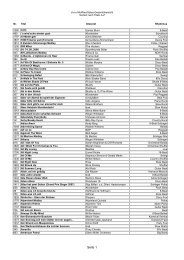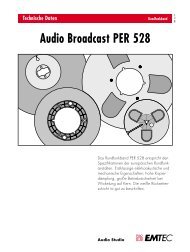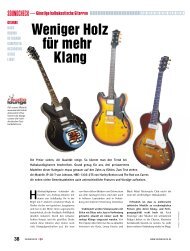Hammerfall® DSP System Multiface
Hammerfall® DSP System Multiface
Hammerfall® DSP System Multiface
Create successful ePaper yourself
Turn your PDF publications into a flip-book with our unique Google optimized e-Paper software.
8.2 Recording Digital<br />
Unlike analog soundcards which produce empty wave files (or noise) when no input signal is<br />
present, digital I/O cards always need a valid input signal to start recording.<br />
To take this into account, RME has included two unique features in the Hammerfall <strong>DSP</strong><br />
system: a comprehensive I/O signal status display (showing sample frequency, lock and sync<br />
status) in the Settings dialog, and status LEDs for each input.<br />
The sample frequency shown in the Settings dialog (see chapter 9, screenshot Settings) is<br />
useful as a quick display of the current configuration (the board itself and all connected external<br />
equipment). If no sample frequency is recognized, it will read ‘No Lock’.<br />
With this configuring any suitable audio application for digital recording is simple. After<br />
selecting the required input, Hammerfall <strong>DSP</strong> displays the current sample frequency. This<br />
parameter can then be changed in the application’s audio attributes (or similar) dialogue.<br />
It often makes sense to monitor the input signal or send it directly to the output. This can be<br />
done at zero latency using TotalMix (see chapter 14).<br />
For an automated real-time monitoring function the H<strong>DSP</strong> <strong>System</strong> supports ASIO Direct<br />
Monitoring (ADM) in ASIO 2.0. When 'ASIO Direct Monitoring' has been switched on the input<br />
signal is routed in real-time to the output whenever Record is started.<br />
8.3 Recording analog<br />
For recordings via the analog inputs the corresponding record channels have to be chosen.<br />
Apart from the internal jumpers which set the basic operating level, the <strong>Multiface</strong> has no means<br />
to change the input level. This would make no sense for the digital inputs, but also for the<br />
analog inputs one can do without it. It doesn't matter if the <strong>Multiface</strong> is operated at a mixing<br />
desk or a multichannel Mic preamp, in either case the level can be controlled directly at the<br />
source to match the <strong>Multiface</strong>'s sensitivity perfectly.<br />
The input sensitivity of the analog inputs can be changed through internal jumpers to meet the<br />
most often used studio levels, see next chapter.<br />
User’s Guide H<strong>DSP</strong> <strong>System</strong> <strong>Multiface</strong> © RME 10






